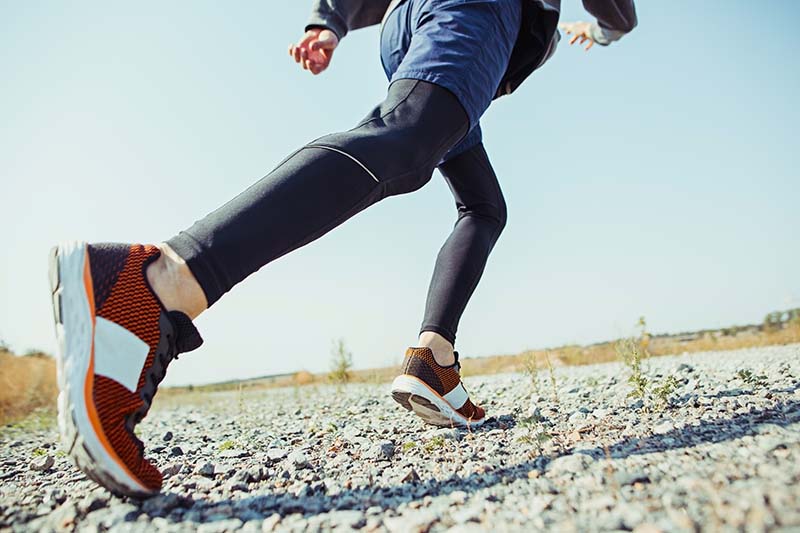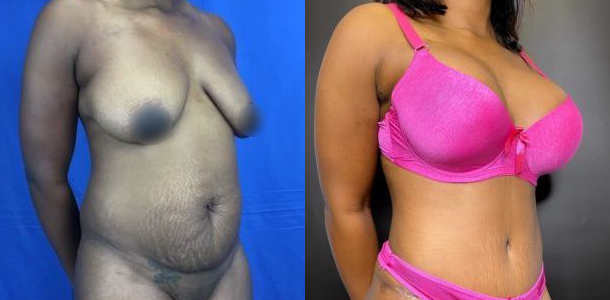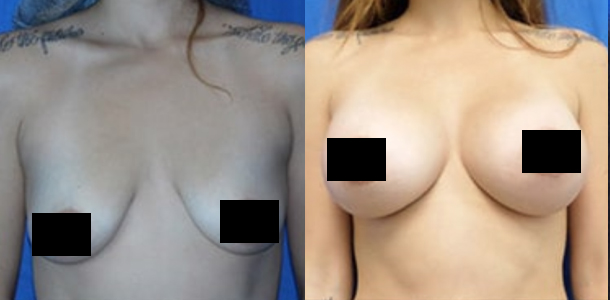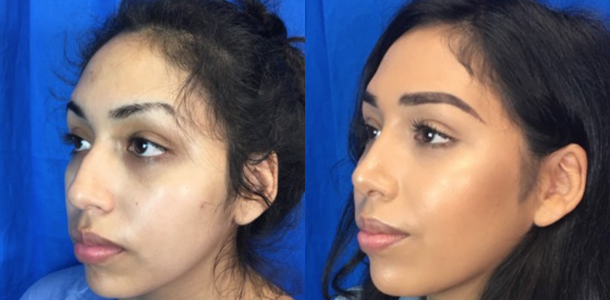Compression Therapy
Consultations offered at our three convenient locations in Pomona, Rancho Cucamonga and Apple Valley, CA

Compression therapy is a non-surgical measure in the management of venous disease. It can be used as a standalone treatment, or in conjunction with other venous therapy. The treatment encourages blood flow in the legs with the use of elasticated socks that use controlled pressure to promote circulation and healing. These garments are known as medical compression hosiery. Wearing these garments reduces pain in the legs and helps patients to go about their daily routine in more comfort.
Chronic venous insufficiency (CVI) is characterized by uncomfortable leg ulcers that can cause mobility issues and swelling. It’s a condition that can worsen with age, and as the global population increases, so too does the number of people who require treatment. In fact, data shows that an CVI consumes an estimated 2% of Western healthcare budgets; (1) a remarkable percentage given the total number of diseases and health conditions. With compression therapy, patients can be involved in their own treatment, supporting their vein health, and helping to accommodate better circulation throughout the body.
Pacific Med Health Group is a leading vein treatment, bariatric & weight-loss surgery, and cosmetic procedure center with offices in Pomona, and Apple Valley. Led by board-certified bariatric surgeon and vein specialist Dr. Lee Au, we provide tailored treatment plans to meet the needs of patients who struggle with varicose veins, leg pain, swelling, and venous ulcers. For further information, and to book a personal consultation to discuss compression therapy, call (800) 555-5551 or contact us via the form on our website.
Contents
About Venous Disease
CVI occurs in damaged leg veins. The heart pumps oxygenated blood around the body through the circulatory system, and that blood returns to the heart for reoxygenation via the veins. Leg veins are particularly prone to dysfunction as they work against gravity to get blood back up to the heart. They do so via internal one-way valves. However, in the case of CVI, these valves stop working efficiently, causing venous reflux. Venous reflux means the blood flows backwards and pools, causing a number of issues including varicose veins and leg ulcers. Whether you have visible varicose veins or not, common symptoms of venous insufficiency include the following.
- Heavy Legs
- Swelling (Edema)
- Bruising
- Burning and Tingling Legs
- Leg Cramps
- Leg Spasms
It is thought that CVI affects 30-50% of the adult population. (2) The condition, if left untreated, will continue to progress, causing impairments to physical comfort and overall quality of life. Compression therapy is the most widely used way to manage venous insufficiency. (3) and its chronic, progressive nature significantly impairs the quality of life.
Leg Ulcers
Leg ulcers affect 1% of the US population and are estimated to cost patients $15 billion annually. (1) When veins fail to work as they should, venous reflux occurs. Blood pools below the malfunctioning valves and causes skin discoloration and skin ulceration. Leg ulcers have the following characteristics.
- Usually present in the ankle
- Take weeks to heal
- Cause darkened, leathery skin
- Superficial varicose veins
- May have a foul-smelling odor
Venous ulcers vary in severity and progress over time. A sore may begin as inflammation and redness in the lower leg. Over time, this area can show signs of fluid leakage as the superficial and subcutaneous tissues are further damaged. Following the leaking of fluid, a condition known as “atrophie blanche” may occur which is a whitish mottling of the skin. In the most advanced stages of venous disease, ulcers can develop into large, difficult-to-manage wounds which may cause permanent damage to the foot, ankle, and lower leg.
What is Medical Compression Hosiery?
Compression therapy limits a problem vein’s ability to expand and causes blood pooling. Medical compression hosiery is made from knitted, elasticated fabric. The elastic fibers run throughout the entirety of the garment to provide support. and there are different distributions of pressure depending on the shape and purpose of the garment. Leg compression garments are manufactured according to different compression level ranges. These ranges are in mmHg (millimeters of mercury; the unit used to measure pressure). Two important compression garment types in the treatment of venous insufficiency are graduated elastic compression stockings (GECS) and progressive elastic compression stockings (PECS).
GECS
GECS are the standard garment type used in compression therapy. GECS have a decreasing pressure profile from distal (farther from the body) to proximal (closer to the body). The two main types of GECS are thromboprophylaxis stockings (TPS), to prevent deep vein thrombosis, and medical compression stockings (MCS), which prevent leg swelling after surgery and play a crucial role in the management of venous insufficiency. (4)
PECS
PECS have a pressure gradient that increases from the ankle to the mid-calf. These compression garments should only be worn during the daytime and removed at night for comfort and to reduce the risk of swelling in areas not under compression. (5)
Benefits of Compression Therapy
- Improves circulation in the legs
- Reduces swelling and bruising
- Effective treatment for leg ulcers
- Improves comfort levels
- Simple therapy instructions to follow
- Contributes to better mobility and quality of life
Venous ulcers can cause significant discomfort and distress. Schedule an appointment at Pacific Med Health Group to assess your issues with varicose veins and venous ulcers to find tailored treatment and relief from uncomfortable symptoms.
Candidates
Candidates for compression therapy are individuals who experience venous insufficiency in the legs. They may have visible varicose veins and ulcers in the ankle area may be present. In most cases, patients seek medical intervention when their legs cause them significant discomfort, However, even if discomfort is mild or absent entirely, the presence of swelling, bruising, and sores in the leg may be unsightly. Though many patients may choose to “self-prescribe”, they should not wear compression garments without a thorough assessment of their condition from a medical professional.
Personal Consultation
Your personal consultation with Dr. Au allows you to speak to an expert about the symptoms you are experiencing. We will ask you to give us some details about your health, if your family has a history of venous disease, and how venous insufficiency is affecting your ability to live your life well. Dr. Au will invite you to describe your current and past symptoms and will perform an examination of the legs.
Venous ulcers are usually comorbid with other circulatory problems in the legs. Dr. Au may recommend compression therapy as a standalone treatment or compression therapy alongside another vein treatment, where required. These procedures involve the destruction or removal of the problem vein(s), and include sclerotherapy, endovenous laser ablation, and microphlebectomy.
Corresponding & Complementary Procedures
Sclerotherapy
Sclerotherapy is considered the most effective way to treat varicose veins. Using an irritant solution known as a sclerosant, it causes damage to the inner lining of the problem vein. Dr. Au injects the fluid into the vein which causes the structure to collapse. Once the inner wall of the vein has collapsed, the vein no longer functions and blood flow safely reroutes around it. Over time, the closed vein is reabsorbed by the body and it fades from view.
Endovenous Laser Ablation
During an endovenous laser ablation procedure, Dr. Au inserts a laser fiber into the vein via a catheter. The laser fiber emits light energy that produces heat. As the fiber is slowly drawn out of the vein, it closes the structure permanently. This achieves a similar effect to sclerotherapy. The vein no longer functions and is gradually metabolized.
ClariVein
ClariVein is a device that treats varicose veins and spider veins. It combines the mechanical destruction of the vein and a sclerosing agent to eliminate troublesome veins in the legs. The catheter tip is inserted into the vein and rotates at high speed causing mechanical damage to the structure. After this, Dr. Au removes the catheter and the sclerosing agent is injected into the vein, closing it.
Microphlebectomy
Microphlebectomy, sometimes known as ambulatory phlebectomy, treats gnarled, bulging varicose veins on the surface of the skin. This procedure is particularly beneficial for people with prominent, unsightly leg veins. After making a minute puncture mark, Dr. Au uses a special tool to hook the vein out of the subcutaneous tissue and remove it.
Bariatric Surgery
Being overweight is a known risk factor for venous disease. Among other causes, venous disease can result from, or become worse because of an increase in weight. Studies also indicate that progressive increases in BMI negatively affect treatment outcomes for chronic venous insufficiency. (6) To find out more about bariatric surgery at Pacific Med Health Group, please visit our bariatric procedures page and read our blog.
Cost of Vein Treatment
Your vein treatment plan will be determined after a thorough physical examination and an evaluation of your medical history and health. Therefore, the cost will vary based on your individual circumstances. Find relief from venous ulcers, varicose veins and the effects of venous disease by contacting Dr. Au and the team at Pacific Med Health Group. To schedule your appointment with us, fill out this form or call (800) 555-5551.
References
- Davies AH. The Seriousness of Chronic Venous Disease: A Review of Real-World Evidence. Advances in Therapy. 2019;36(S1):5-12. doi:10.1007/s12325-019-0881-7 https://www.ncbi.nlm.nih.gov/pmc/articles/PMC6824448/
- Berszakiewicz A, Kasperczyk J, Sieroń A, Krasiński Z, Cholewka A, Stanek A. The effect of compression therapy on quality of life in patients with chronic venous disease: a comparative 6-month study. Advances in Dermatology and Allergology. 2021;38(3):389-395. doi:10.5114/ada.2020.92277 https://www.ncbi.nlm.nih.gov/pmc/articles/PMC8330868/
- Ratliff CR, Yates S, McNichol L, Gray M. Compression for Primary Prevention, Treatment, and Prevention of Recurrence of Venous Leg Ulcers. Journal of Wound, Ostomy and Continence Nursing. 2016;43(4):347-364. doi:10.1097/won.0000000000000242 https://www.ncbi.nlm.nih.gov/pmc/articles/PMC4937809/
- Berszakiewicz A, Sieroń A, Krasiński Z, Cholewka A, Stanek A. Compression therapy in venous diseases: current forms of compression materials and techniques. Advances in Dermatology and Allergology. 2020;37(6):836-841. doi:10.5114/ada.2019.86991https://www.ncbi.nlm.nih.gov/pmc/articles/PMC4937809/
- Jünger M. “Progressive” elastic compression stockings as future standard. Vasa. 2019;48(5):379-379. doi:10.1024/0301-1526/a000805 https://www.econtent.hogrefe.com/doi/10.1024/0301-1526/a000805
- Deol ZK, Lakhanpal S, Franzon G, Pappas PJ. Effect of obesity on chronic venous insufficiency treatment outcomes. Journal of Vascular Surgery: Venous and Lymphatic Disorders. 2020;8(4):617-628.e1. doi:10.1016/j.jvsv.2020.04.006 https://pubmed.ncbi.nlm.nih.gov/32335333/



